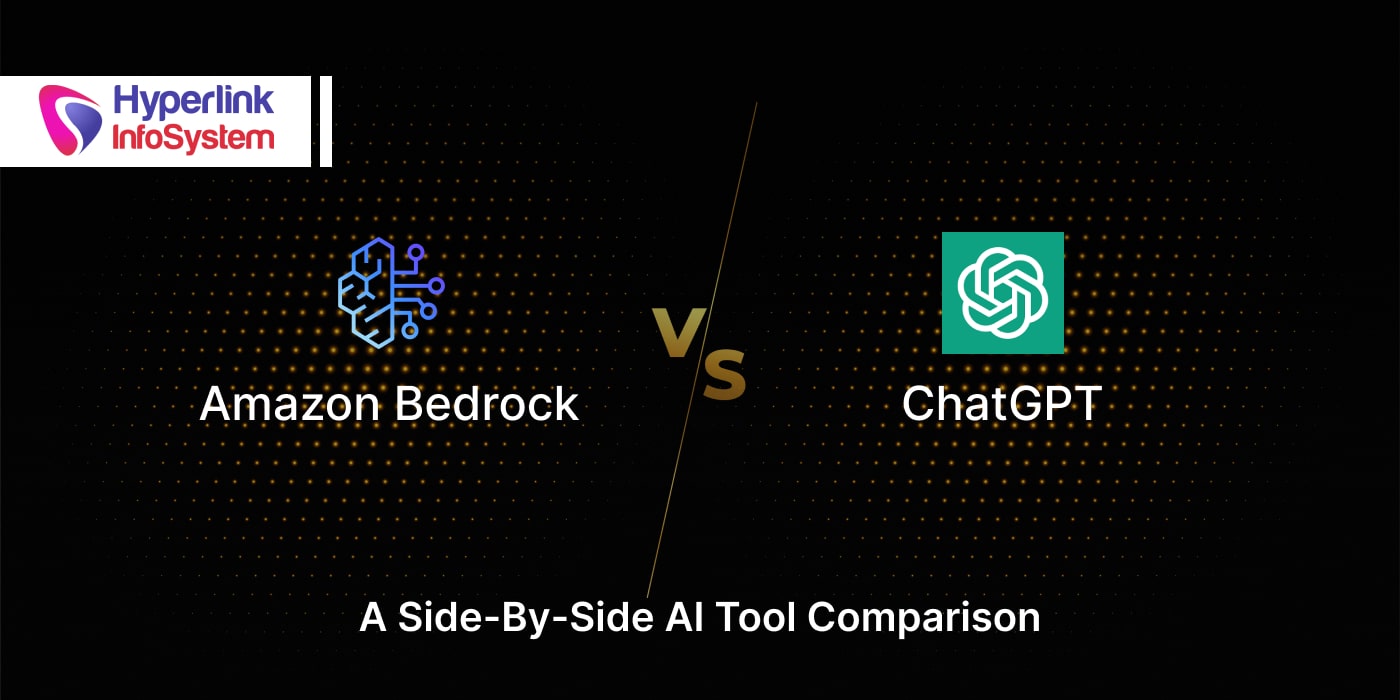Inventory Management For Ecommerce: Boost Efficiency with Ecommerce App Development
Feb 2025

In any business segment, ensuring seamless operations and satisfying customer needs are essential for a business to thrive. Whether you're a small business owner or running an enterprise company, managing inventory seamlessly is a must to cut down unnecessary operational costs. With the evolution of technology, advanced and automated inventory management software is now becoming an integral part of eCommerce services. It helps businesses optimize their inventory management strategies.
As businesses are growing these days, the demand for robust inventory management for eCommerce is also increasing. In an industry constantly undergoing change, there has been immense growth in the requirement of strong inventory management for eCommerce. Today, numerous companies seek professional e-commerce app development services that can deliver tailor-made solutions in accordance with specific requirements.
All aspects of inventory management software, such as its advantages, method of development, features, and price of development, will be discussed in this blog. By the end, you will also learn why it's important to hire a top app development company or specialized developers to build a scalable and effective system that enhances your e-commerce inventory management process.
What Is Inventory Management Software?
It is a specialized program called inventory management software that would automate and make the process of monitoring, controlling, and improving inventory levels real-time. With this software, it ensures that companies in the eCommerce industry can have smooth running operations since there is a critical need for keeping a delicate balance between supply and demand.
At its core, inventory management software is an electronic solution that gives businesses total control over their stock. This allows a view of all supply chain activities, sales patterns, and stock levels in real time. The above helps prevent companies from constantly repeating the most common mistakes, including overstocking or running out of stock. It helps minimize waste and provide informed decision-making.
Why Is Inventory Management Software Vital for eCommerce?
In the hectic world of eCommerce, manual inventory management leads to errors, delays, and huge losses. A robust eCommerce inventory management system thus reduces manual errors by offering automatic processes and live data. With on-time delivery, it ensures customer delight and helps organizations implement effective e-commerce inventory management procedures.
What Makes the Inventory Management Process Complex in eCommerce?
The nature of the eCommerce market is constantly changing, which can make it difficult to undertake inventory management. Some of these factors include the use of multiple channels for sales, changing demands, and real-time changes required. The problems that make it complicated to run the e-commerce inventory management process are further discussed as follows:
- Multi-Channel Selling
The current eCommerce businesses usually sell on several channels, which include social media, marketplaces like Amazon and eBay, and the company's website. In this case, inventory management becomes complex, especially if real-time synchronization of stock levels is needed to avoid overselling or underselling.
- Changes in Demand
Abrupt changes in consumer tastes may cause inconsistent demand. Effective forecasting of inventory is crucial for companies to meet their demand without overstocking which causes waste. Along with that, it may add unnecessary storage costs.
- Global Inventory Chains
Several ecommerce sites have bought goods from multiple suppliers worldwide. Managing lead times, transit times, and clearing customs add complexity to inventory management.
- Exchanges and Returns
Effective return handling is crucial to the happiness of the client. According to their condition, returned goods must be inspected, restocked, or discarded. This process can make the reconciliation of stock and disrupt the inventory flow.
- Problems in Storage and Fulfillment
It requires a very careful coordination process to manage inventory across multiple warehouses or fulfillment centers. Accurate classification, location tracking, and real-time stock updates would be critical in preventing operational bottlenecks.
- Integration with Other Systems
E-commerce companies often use several solutions for customer relationship management, sales, accounting, and delivery. Gaps and inefficiencies may arise from the lack of a seamless integration between these technologies and the e-commerce inventory management process.
Benefits of Inventory Management Software Development
The following are the main benefits of funding the creation of inventory management software:
- Improved Efficiency
Increased Inventory Accuracy Overstocking or stockouts are frequently the result of mistakes made when managing inventories by hand. By automating tracking, inventory management software guarantees real-time accuracy in product availability, order statuses, and stock levels. This optimizes inventory levels and minimizes expensive errors.
- Instant Visibility
Inventory management software provides a centralized platform for real-time insights into order statuses, sales patterns, and inventory levels. This allows businesses to better plan for restocking, make informed decisions, and react to changes in the market.
- Cost Savings
Goods management software helps companies save operating costs in the following ways: it minimizes overstocking, hence reducing storage costs, and controls losses from unsold goods. It also saves labor costs related to manual control of inventory.
- Better Demand Forecasting
Sophisticated software solutions now use analytics and artificial intelligence to forecast demand trends based on previous data. Businesses can reduce surplus inventory, prevent stock shortages, and prepare for peak seasons through accurate demand forecasts.
- Smooth Multi-Channel Integration
Today's inventory management software seamlessly integrates various markets, sales channels, and eCommerce platforms. This prevents overselling and enhances customer satisfaction by keeping inventory in sync across all platforms.
- More Client Satisfaction
Quicker order fulfillment and real-time stock tracking have a direct relationship to the customer satisfaction level. Customers' confidence builds up, and repeat business is guaranteed as they can rely on the availability of the right product and it gets delivered at the right time.
- Streamlined Returns Procedures
For eCommerce businesses, returns are usually a difficult affair. It hastens the procedure by categorizing returned products, adjusting the inventory levels, and recording the data for future reference.
- Customization and Scalability
Custom software can be made to grow with your company. A unique ecommerce inventory management system develops with your business, whether you're introducing new products or entering new markets.
- Improved Analytics and Reporting
Through its reporting features, inventory management software offers comprehensive insight into the success of sales, inventory turnover, and the operational efficiency that comes with this. Growth-promoting data-driven decisions are facilitated by these analytics.
Why Build Your Own Software?
Although there are off-the-shelf options, the advantages of creating custom inventory management software include scalability, smooth integrations, and customized functionality. Hiring specialized experts or collaborating with a mobile app development company ensures that the software will precisely match your company's objectives and needs.
We will discuss the steps elaborately in the subsequent part about developing inventory management software for eCommerce so that you can understand how it takes one to ensure that one creates a sound system that serves their needs.
Process of Inventory Management Software Development for eCommerce
To ensure that the solution meets your business needs, developing effective inventory management software for eCommerce requires a structured approach. Here is a step-by-step inventory management software development process for eCommerce:
Requirement Analysis
- Objective: The purpose of the requirement analysis is to understand the specific needs and challenges of your eCommerce business.
- Activities: Study how inventory is currently managed in e-commerce. Identify issues like incorrect stock levels or poor order tracking. Describe features such as automation, analytics, and multi-channel integration.
Analyze the Competition and Perform Market Research
- Objective: Compare current solutions to benchmarks to identify areas of weakness and novelty.
- Activities: Research the most popular inventory management software to determine customer expectations and industry trends.
Prototyping and Design
- Objective: Develop an interface that is both beautiful and user-friendly.
- Activities: Create mockups and wireframes of the software interface.
Ensure that non-technical users can easily navigate and understand the design.
Possibilities for customization to meet specific company requirements.
Development
- Objective: Build the core features and interfaces.
- Activities: Apply agile approaches for iterative development.
Ensure integration with payment gateway, CRM, and eCommerce platform.
Use scalable architecture to accommodate future expansion.
For professional execution, work with a mobile app development business or hire dedicated developers.
Assurance of Quality and Testing
- Objective: Identify and eliminate problems to ensure a flawless consumer experience.
- Activities: Thoroughly test it for security, functionality, and ease of use
To ensure usability, test in a variety of devices and Internet browsers.
Deployment and Integration
- Objective: A successful deployment or integration process implies the seamless implantation of your program with your already existing systems
- Activities: Have the program put up on either a web server at headquarters or the cloud. Train the employee on the successful use of the system.
Updates and Maintenance
- Objective: Update software with new features by introducing the latest technological changes.
- Activities: Provide current updates based on user input.
Ensure that the changing standards of the industry are maintained.
Features to Include in Inventory Management Software Development
You need to introduce basic components that fulfill all of the critical operational needs to design an efficient and robust eCommerce inventory management system.
Real-time Inventory Monitoring
- Monitor stock levels in real time at various other locations.
- Notify the events of low or no stock level.
Multi-Channel Integration
- Integrate shopping carts on e-commerce websites like Shopify, eBay, and Amazon.
- Ensure that all sales channels are updated on the availability of stock.
Order Management
- Automate the order fulfillment, processing, and delivery.
- Track the status of orders to ensure timely delivery.
Demand Forecasting
- Use AI analytics to predict inventory needs by analyzing past data and trends.
- Stockouts and overstocking can be prevented through the streamlining of procurement schedules.
Barcode/QR Code Scanning
- Enable easy scanning of barcodes and QR codes to input stock and track them.
- Minimize manual errors and speed up inventory audits.
Supplier Management
- Track lead times, purchase orders, and vendors.
- Automate placing new orders when stock falls to a specific level.
Analytics and Report Generation
- Generate reports for sales performance, inventory turnover, and operational efficiency.
- Use the insights from them to make data-driven business decisions.
Refunds and Returns Management
- It facilitates the process of return management and replenishment of inventory.
- Stock level is updated on the spot when a return is completed.
Personalized Notifications and Alerts
- Notify customers of order discrepancies, low stock, or delayed shipping.
- Enable personalized alerts for critical updates.
Accessibility on the Go
- Provide a mobile-friendly interface so that inventories can be managed on the go.
- Provide iOS and Android apps to enable remote access.
Connecting Third-Party Tools
- Connect easily to warehouse management systems, CRM platforms, tools, and accounting applications.
Why These Features Matter?
These capabilities, when included in your inventory management software development, can guarantee more efficient operations, fewer mistakes, and happier customers. Hire eCommerce developers or work with a leading app development company to ensure that your solution is scalable for future expansion and customized to the unique requirements of your organization.
In the next section, we will consider the various options to help you choose the best eCommerce inventory management software for your business.
Types of Inventory Management Software for eCommerce
Your business size, your level of business complexity, and specific needs all will determine what type of inventory management software to use. There are two types, as summarized below:
- Periodic Inventory Systems
This system is suitable for small businesses having minimal stock, as it involves frequent manual reordering of stocks.
- Perpetual Inventory Systems
Real-time tracking systems update inventory levels with every transaction. Suitable for all sizes of eCommerce companies with different sales channels.
- RFID-Based Systems and Barcode Systems
These systems track stocks accurately and effectively using barcode or RFID technology. Suitable for companies that manage large inventory that is updated frequently.
- Warehouse Management Systems (WMS)
WMS provides advanced capabilities such as picking orders, bin tracking, and multi-location control, all geared toward maximizing inventories in the warehouse.
- Cloud-Based Inventory Management Systems
The cloud-based system is one of the most popular eCommerce firm options today because it provides access anywhere and at any given time, providing scalability, changes in real time, and efficient multi-channel interactivity.
- Customized Inventory Management Software
Software tailored for the particular requirements of your e-commerce operations: It provides special features, scalability, and flexibility for improving control over the process of inventory management in e-commerce.
Cost to Develop Inventory Management Software
The cost to develop inventory management software depends on the complexity, functionality, platform, and experience level of the development team. While a feature-rich, tailored solution with multi-channel capabilities, complex analytics, and AI functionality may run $50,000 to $150,000 or more, a basic system could run between $20,000 and $40,000. Using specialized developers or going through a mobile app development company ensures you'll get the performance and scalable application you require, fully aligned with your requirements.
Hyperlink InfoSystem: Why Choose It?
- Proficiency in developing e-commerce applications
Hyperlink InfoSystem has years of experience in developing e-commerce applications and is well aware of the problems of inventory management across platforms and sales channels, so your business will run smoothly.
- Adaptable Solutions
We create scalable and adaptable software that satisfies your particular business requirements. It provides expertise in real-time analytics, AI-driven demand forecasting, and multi-channel integration.
- Dedicated Development Team
Engaging Hyperlink InfoSystem's ecommerce developers or dedicated developers puts you in touch with a group of dedicated developers who work to produce feature-rich, high-quality solutions.
- End-to-End Service
We ensure a flawless experience through full-service solutions from the very first consultation and requirement collection, to design, development, and post-launch support.
- Affordable and Transparent Pricing
Our reasonably priced solutions ensure that you get the best value without losing out on quality.
Utilize dependable and effective inventory management software to strengthen your company. In the ever-changing eCommerce market, let Hyperlink InfoSystem help you improve operational efficiency, optimize your procedures, and maintain your competitive edge. Contact us today to start your path to operational excellence!
Conclusion
Creating reliable inventory management software that fulfills your requirements can improve customer satisfaction, cut costs, and streamline operations which are critical to the success of an eCommerce company in today's competitive online marketplace. Using cutting-edge technologies, implementing sophisticated features, and conducting time-tested e-commerce inventory management practices can help you succeed at overcoming inventory issues and spur growth.
Working with a renowned mobile app development company like Hyperlink InfoSystem ensures that you get a smooth development process and a high-performing solution. Our professionals are always available to assist you in all the stages, be it an upgrade of current systems or a ground-up development.
Get started on the path to operational excellence by reaching out to Hyperlink InfoSystem and let us turn your inventory control procedure into a competitive edge.
Frequently Asked Questions
In e-commerce, an inventory management system is the name given to software that helps businesses track, monitor, and optimize stock levels in real-time across multiple sales channels. It eliminates stockouts, ensures timely order fulfillment, and enhances overall operational efficiency.
E-commerce commonly uses established tools such as NetSuite ERP, TradeGecko (QuickBooks Commerce), and Zoho Inventory for the management of stock. To simplify inventory management, these technologies give features such as automated stock updates, multi-channel integration, and real-time tracking.
There are four types of inventory management systems. These include:
- Periodic Inventory System: This system updates stock at set intervals.
- Perpetual Inventory System: This system allows real-time tracking of the stock.
- RFID or Barcode system: This system uses scanning technologies for accurate tracking.
- Cloud-based inventory systems: It provides multi-location access in real-time and smooth integrations.
Inventory management in CRM is the integration of inventory tracking and management features into Customer Relationship Management software. It ensures that companies can automate reordering, keep an eye on stock levels, and match inventory data with customer interactions to improve operational efficiency.
Latest Blogs

Is BlockChain Technology Worth The H ...
Unfolds The Revolutionary & Versatility Of Blockchain Technology ...


IoT Technology - A Future In Making ...
Everything You Need To Know About IoT Technology ...

Feel Free to Contact Us!
We would be happy to hear from you, please fill in the form below or mail us your requirements on info@hyperlinkinfosystem.com
Hyperlink InfoSystem Bring Transformation For Global Businesses
Starting from listening to your business problems to delivering accurate solutions; we make sure to follow industry-specific standards and combine them with our technical knowledge, development expertise, and extensive research.
4500+
Apps Developed
1200+
Developers
2200+
Websites Designed
140+
Games Developed
120+
AI & IoT Solutions
2700+
Happy Clients
120+
Salesforce Solutions

40+
Data Science


















